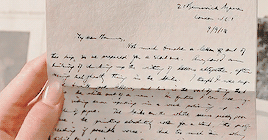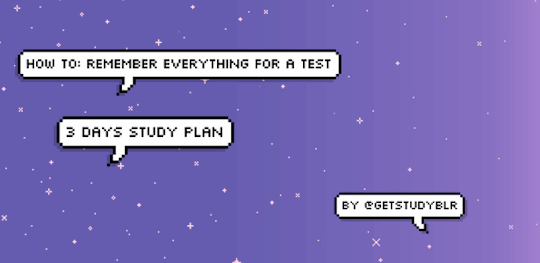Studyblr/Bookblr ... chronicles of a homebody
Last active 60 minutes ago
Don't wanna be here? Send us removal request.
Text
Currently reading: the hating game
Do I have the same book as everyone!?!
Cuz i am not enjoying this as much as I thought it would...👀👀👀
5 notes
·
View notes
Text
Literally same, someone give suggestions please😭🥺
Also @pparkersbitch if you haven't read the Spanish love deception read it cuz it's exactly what you described you wanna read✨
I really need to read a cheesy, funny and over-the-top romantic YA novel right now, any suggestions? Honestly even some cute fanfiction, I'm down for anything lmao
16 notes
·
View notes
Text
Currently reading " The Phone Box At The Edge Of The World" by Laura Imai Messina on my Kindle and it's so good such intricate writing such beautiful prose... I can't help but want a physical copy of this book at this point I can tell this is going to be one of my fav reads this year
0 notes
Text
I'm reading it rn like more than halfway thru it and the sexism has increased its disgusting and i keep skipping parts because of it , the mystery aspect is the only reason I'm continuing to read it rn
Uh so has anyone here read the shadow in the wind recently? Cause I need to know if the sexism gets dialled down and if Daniel becomes less of a little snot as the book goes on? I'm about 10% of the way through and I like the themes and the complexity but Daniel is on my last nerve currently.
4 notes
·
View notes
Text


12/10/2020
I haven't posted on here for a while now...but studying has started to feel real nowadays,
Real, necessary and satisfying
Even when I'm drowning in work I don't mind it I feel oddly at peace amidst this chaos we are in...
#studyblr#study aesthetic#studyspo#dark academia#ravenclaw study#study#coffee#sunset#study desk#desk layout
65 notes
·
View notes
Text
How to Draft A Standard Essay Outline
First of all, if you are panicking, please take a deep breath. Have some water or a snack. I believe in you!
Writing essays, especially as an early undertaking, can feel overwhelming. A standard five paragraph essay typically has a 500-700 word requirement, meaning each paragraph needs at least 100 words. *cringe*
Where do I start? Well, maybe with an outline?
In my tutoring experience, a prominent issue in students’ essays was organization. I was also plagued me until I began making it a point to outline.
Here are a few reasons why I love outlines:
They prevent the situation where you write an entire essay in one fell swoop, only to read it back and it makes no sense.
An outline can be easily presented to a tutor or professor so that they can quickly diagnose if your general ideas fit into the prompt/assignment.
An outline makes researching easier, because you already know how and where you plan to incorporate it.
All that being said, if flying by the seat of the pants is your style and it works for you, then that is awesome too! Unless it is part of your coursework, you should not feel pressured to outline.
My standard template is as follows: (tip: you do not necessarily need to go from top to bottom, find an order that makes sense to you!)
Paragraph 1:
Hook:
Turn:
Thesis:
Main Point:
Body Paragraph Topics:
Paragraphs 2-4(+):
Topic Sentence:
Evidence:
Connection to Thesis:
Final Paragraph:
Restatement of Thesis:
Final Thoughts / Explanation of Value:
Citations Page:
Now, what does all that mean?
Hook: is the first sentence of the essay which draws in the reader and sets the stage for the essay. It should be catchy and fun, but not too casual.
Turn: is a few sentences which elaborate on the hook, introduce theme/topic of the essay, and lines up the thesis statement.
Thesis Statement: Most of the time, this is the final sentence in this paragraph. It has two essential elements: what you are trying to “prove” (or compare, or point out, or define, etc) and the body paragraph topics.
Topic sentence: acts just like the hook, except it pin-points the idea of the particular paragraph.
Evidence: is the meat of the paragraph and will include your source material as well as what you want to say about it. This could include book/poetry quotes, article quotes, data/statistics, or a combination of these if not even more elements, depending on the assignment. The key is to quote as little as possible so that your ideas can shine. Quote only the most important pieces of information. One sentence, if not less, per source is the usual, but every assignment is different. You can also paraphrase. I like to fully write out my quotes, paraphrases, and in-text citations before even starting the paragraph. You also might not be at the point of using quotes, and that’s ok, too!
Connection to the Thesis: It may seem repetitive, but at the end of the paragraph, it is paramount to connect of the thesis and explicitly state how your evidence serves the main point of the essay.
Restatement of Thesis: This now is acting as a summary instead of an introduction, reminding the reader of the content of your paper. Do not just copy and paste it from the introduction to the conclusion; use different words.
Final Thoughts: These are basically limitless in terms of what they can be, but they do have the universal function of catching the reader’s attention one last time to hit home as to why what you have written is important or meaningful. You could interpret this in a ton of ways: meaningfulness to you, the field, humanity, the characters in the book… Anything from huge to small, you just need to justify its value in someway.
Disclaimer: every professor/teacher is different! Make sure that you ask them any questions you have about expectations on assignments in order to set yourself up for success!
Good luck, my friends. I hope this helps you on your next essay! Please leave a comment if you have any suggestions or edits for this post or if you used this to draft an essay.
177 notes
·
View notes
Text
Learning Languages and How to Make it Fun
(gifs not mine, credit to the artist)


How does a child learns? Immersion
So you gotta dive deep
Find songs that you like. You don't have to understand, you just have to enjoy the song.
Listen them at least once a day. The idea is for you to get familiar with the sounds.
Once you have already heard them too many times (without getting tired of them) look for the lyrics. In their native language, not a translation.
If you can read in that language, then try reading them. Print them if you have to or write them down (this is better) and as you listen to the song try to sing.
If there's a word/sentence you like because it sounds pretty, mark it.
If there's a word you don't know how to/can't pronounce, mark it.
For example, I have a journal in which I write Japanesse Kanji that I find beautiful (whether is because of the meaning or the symbol itself is pretty)
Once you are familiar with the song look for a translation.
Check those words you have marked with the translation.
While looking for definitions it's better if you find images (so can have an idea of what that word is) instead of a definition in your language (unless is a long/complicated concept).
Movies, you must watch movies in that language. Better if they are from that country. (It can also be a doubled movie, perhaps you could look for one of your favorites)
Watch them with subtitles (in your language) once or twice. Then watch them again but this time without subtitles or with subtitles of said language. (You already know the plot, so you can still understand what's going on)
If you like to read, look for children literature. It's easy and fun.
Keep reading even if you don't understand a single sh*t. It doesn't matter.
Mark again those words you like, don't know the meaning or can't pronounce.
Write at least one sentence every day. It doesn't have to be right, it doesn't have to be long or poetic, you just gotta write.
If you still don't know much about grammar (enough to formulate a sentence on your own) then write a quote from one of those songs, movies or books you read. Again it doesn't matter if you don't understand what are you writing.
If you already know another language, try to learn the new language with that one. For example, I learn german from english instead of my native language spanish.
Videogames. In my experience this is amazing. You have no idea idea how much I learned english just from games.
You have fun playing, engaged with a story, while constantly hearing the language. You don't even have to pay attention at what they are saying, eventually you'll figure it out. It's very intuitive.
And because games, usually, requires that you spend many hours playing you will have a lot of practice without actually studying.
Some games, if you look on the settings menu, even have other languages instead of english. For example I played Assassin's Creed Brotherhood in italian and french and AsC III in russian and japanese (the voice actors are fantastic).
Seriously, videogames are freaking amazing for learning.
The idea of this, is that you can imitate the learning process a child does, while also having fun and enjoying it. Kids learn by making mistakes, by playing with words and by being constantly surrounded with the language. At first, kids have no idea what they are doing, they just repeat what they see and hear. So it's okay if you don't know what are you doing, take that pressure off. This is not school/college, this is just you trying to learn a culture. So be kind and patient with yourself.
LEARNING SHOULD BE FUN, be creative with your methods and try everything (so you can find what you are comfortable with). It is scientifically proved that if you like what you are studying and having fun it will be 10x easier to assimilate and remember the knowledge you are acquiring.
14K notes
·
View notes
Text
Getting shit done is also self -care
just putting it out there
3 notes
·
View notes
Text
This right here is my motivation to study
Small reminder since school and college started again
3K notes
·
View notes
Photo

Hello, people! The time has come: I will teach you the secret to study for three days and remember everything for your test. This is a hardcore studying session so I would recommend to only do it when you are truly freaking the fuck out. Now, I must tell you: It’s gonna involve some hard work, so sit comfortably because we’re about to start:
REMINDER: YOU DON’T NEED TO DO THIS IN A ROLL. THIS IS SUPPOSED TO BE DONE DURING THE COURSE OF THE DAY.
REMINDER 2: REMEMBER TO EAT, DRINK WATER AND GET ENOUGH REST. YOU DON’T NEED TO FORGET ABOUT YOUR HEALTH IN ORDER TO GET BETTER GRADES.
DAY 1
First reading of your main textbook
Second reading + highlighting
Research more about the topic (internet, other books, talk to your friends, etc)
Resume everything (notes)
Do a mind map of main points
If what you’re studying needs something to be memorized “word by word” (such as: meanings, processes, references, chemical reactions, etc), write it down and put it on your wall. You’re gonna read it several times during the day.
Write down the topics and key words on a reference paper (you’re gonna take this paper everywhere, forcing your memory to expand from those simple key words)
Review your notes
Do ten exercises (questions)
Review your notes + exercises
Watch a video class
You’re done for today. Good job. Now rest, tomorrow is a new day.
DAY 2
Review your notes
Read them out loud
Read them again, but this time record yourself
Listen to it. Twice.
Review your notes before bed
DAY 3
Review your notes + listen to your recordings from yesterday
Do 30 exercises (questions)
Review notes + exercises
Listen to your recordings again
Review your notes one more time.
FANTASTIC JOB! Now it’s your time to rest. If you’re feeling like it, read your notes one more time before bed.
One more time, this is a heavy studying session, and not supposed to be done all the time. Remember to take care of your health and take several breaks during the day. If you don’t need, there is no need to do everything listed here.
Good luck!!!
23K notes
·
View notes
Text

I have two exams tomorrow and I'm only done with one subject soooo that's fun😂
On the bright side I took a really asthetic photo of my watermelon juice ❤️❤️❤️

0 notes
Text
With the college fests going on we hardly get time to study ...here is me completing my assignments with my friend in a cafe we found

37 notes
·
View notes
Text
Working on a french assignment , really need to catch on my french tho the only thing I'm good at is to say hello and how are you😂

2 notes
·
View notes
Text
Rewriting some notes

4 notes
·
View notes
Text
My first time annotating and I think I did a good job

#studyblr#study notes#study desk#study motivation#study space#study#study session#studying#studymode#studyspo#studyinspo
0 notes
Text
HOW TO ANNOTATE [for english + literature classes]
below are my own tips and tricks on how to annotate text (fiction, literature, poetry, etc. not textbooks or non-fiction) (all links and resources are at the bottom of this post) enjoy :)
HOW SHOULD YOU ANNOTATE?
1. If you are given your own personal copy of a poem or novel for your class, it’s easiest to annotate on that copy as you read.
2. If your book is a class copy you’re borrowing, you might be able to get away with lightly annotating in pencil and going back to erase it after you’ve written your annotations on separate notes.
3. You can also write on sticky notes and attach them to the pages where they are relevant.
4. If none of these appeal to you, scribble everything you make note of as you read and write out neater notes after.
Since I usually have to borrow copies of novels for my English class, I have two steps of annotating; I first read and scribble down everything that comes to mind. Then I’ll write out a more structured copy of my annotations.
This doesn’t apply to everyone, but since my teacher likes to have class discussions about the book/poem, I also leave a section in my notes for writing things talked about in these discussions.
THE TWELVE “TICS”
My English teacher taught me this trick and I always use it when annotating. TICS stands for the T’s, I’s, C’s and S’s of literary devices:
Tone - looking for clues in the speaker and general mood of the story/poem.
Title - not always necessary, but sometimes chapter titles or the main title of a poem/novel are ambiguous or relate to the theme.
Imagery - metaphors, similes, personification, etc.
Irony - kind of like title, it’s not always necessary but it’s still a good idea to look out for it.
Connotation - a meaning of a word that isn’t a literal definition but is implied or relates to it. for example the word mother implies love, kindness, childhood, etc.
Contrast - this is one of the main things to look out for and it can be applied to characters, setting, symbols, etc.
Character - another huge category to look out for; you can write down anything relating to character development, symbolism, conflict, etc.
Conflict - internal conflicts vs external conflict. usually more relevant in literature but can be applied to poetry.
Symbolism - for most, symbolism is the easiest to pick out and it ties in with theme and imagery.
Setting - another main topic. you can take note of symbolism, contrast, irony and imagery in the setting.
Syntax - the same thing as sentence fluency, usually more relevant in poetry but can be applied to literature.
Structure - how a novel or poem is structured by lines, paragraphs, chapters, beginning middle end, etc.
SUMMARIZING
I like to summarize each chapter of a novel on a large pad of to-do list sticky notes. This way it’s brief, it allows me to focus on the most important events, and I can keep it posted on my notes sheets from each chapter.
COLOUR CODING
I love using a colour system to add to my notes. The T’s, I’s, C’s and S’s in “TICS” are all coded a different colour, but you can decide on any colour scheme you want.
KEY QUOTES AND SYMBOLS
Most poems and novels have a downloadable PDF online. I always keep a PDF copy of the piece I’m annotating on my laptop so I can look up key phrases and words.
If you have a Mac, whenever you open a PDF there’s a little search bar in the top right corner where you can type in key words or phrases and it will give you the pages they are on. I like to do this when I need to expand on a certain symbol or motif and I need some quotes related to it.
You can also email PDF files to your iPhone, iPad, etc. and open it in iBooks. You can actually annotate any text/book in iBooks by highlighting with different colours and writing small notes about the book.
RESOURCES
I LOVE this video on how to annotate by @studyign on studytube! https://www.youtube.com/watch?v=muZcJXlfCWs
How to Annotate 3 Ways: http://a-vce-blog.tumblr.com/post/135418517521/3-ways-to-annotate-your-english-text
513 notes
·
View notes
Text










The Amazon Forest produces more than 80 percentage the world’s oxygen and is home to more than half of the world’s species of plants, animals and insects.
It has been burning for 3 weeks and we have just found out about it!
The lungs of the Earth are on fire.
#Amazon#fire#save#burn#help the Amazon#pray for amazonia#pray#forest#nature#animals#alert#sos#Earth#Brazil#colombia#peru#Ecuador#brasil#news
6K notes
·
View notes